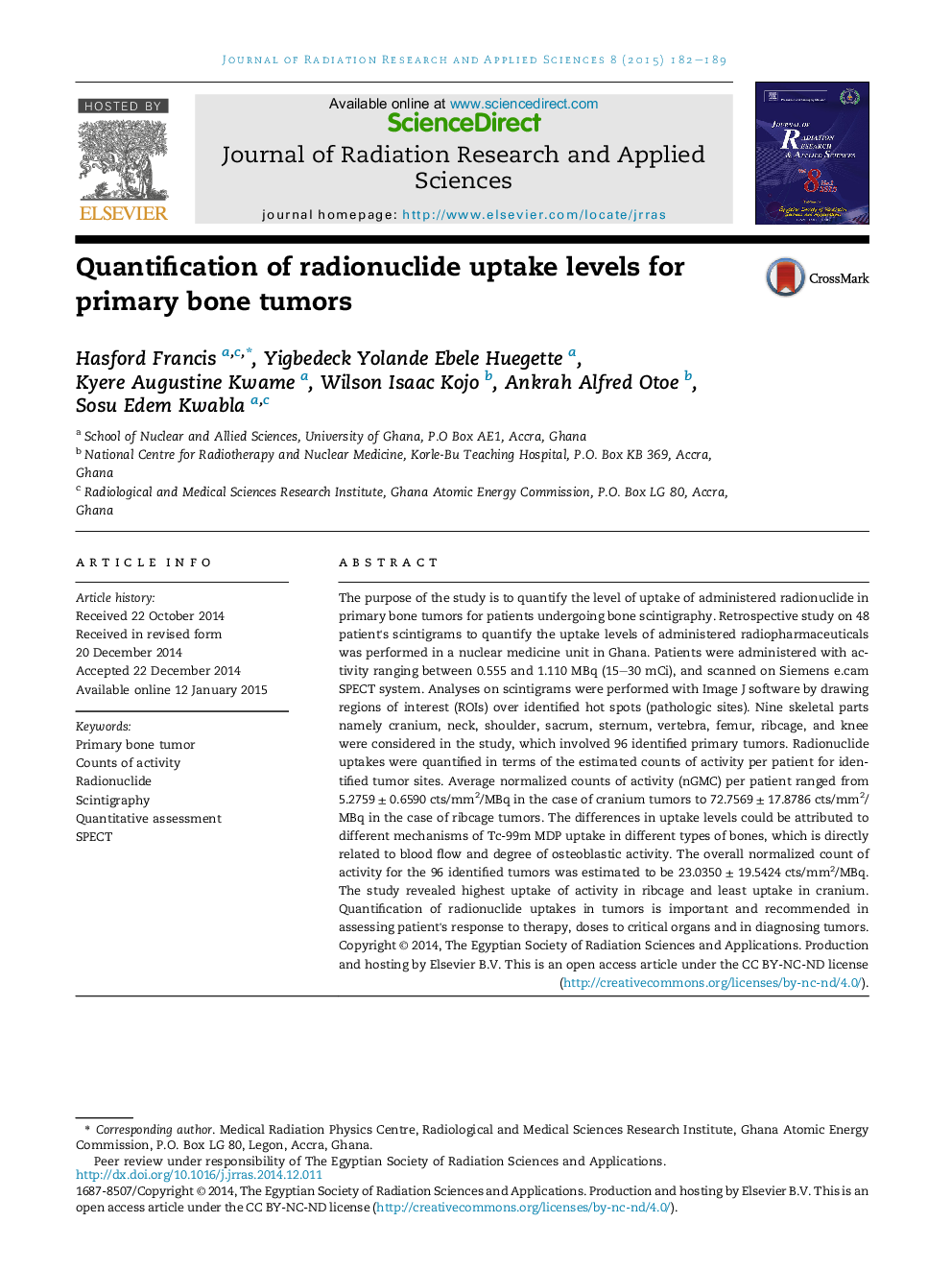| Article ID | Journal | Published Year | Pages | File Type |
|---|---|---|---|---|
| 1570374 | Journal of Radiation Research and Applied Sciences | 2015 | 8 Pages |
The purpose of the study is to quantify the level of uptake of administered radionuclide in primary bone tumors for patients undergoing bone scintigraphy. Retrospective study on 48 patient's scintigrams to quantify the uptake levels of administered radiopharmaceuticals was performed in a nuclear medicine unit in Ghana. Patients were administered with activity ranging between 0.555 and 1.110 MBq (15–30 mCi), and scanned on Siemens e.cam SPECT system. Analyses on scintigrams were performed with Image J software by drawing regions of interest (ROIs) over identified hot spots (pathologic sites). Nine skeletal parts namely cranium, neck, shoulder, sacrum, sternum, vertebra, femur, ribcage, and knee were considered in the study, which involved 96 identified primary tumors. Radionuclide uptakes were quantified in terms of the estimated counts of activity per patient for identified tumor sites. Average normalized counts of activity (nGMC) per patient ranged from 5.2759 ± 0.6590 cts/mm2/MBq in the case of cranium tumors to 72.7569 ± 17.8786 cts/mm2/MBq in the case of ribcage tumors. The differences in uptake levels could be attributed to different mechanisms of Tc-99m MDP uptake in different types of bones, which is directly related to blood flow and degree of osteoblastic activity. The overall normalized count of activity for the 96 identified tumors was estimated to be 23.0350 ± 19.5424 cts/mm2/MBq. The study revealed highest uptake of activity in ribcage and least uptake in cranium. Quantification of radionuclide uptakes in tumors is important and recommended in assessing patient's response to therapy, doses to critical organs and in diagnosing tumors.
